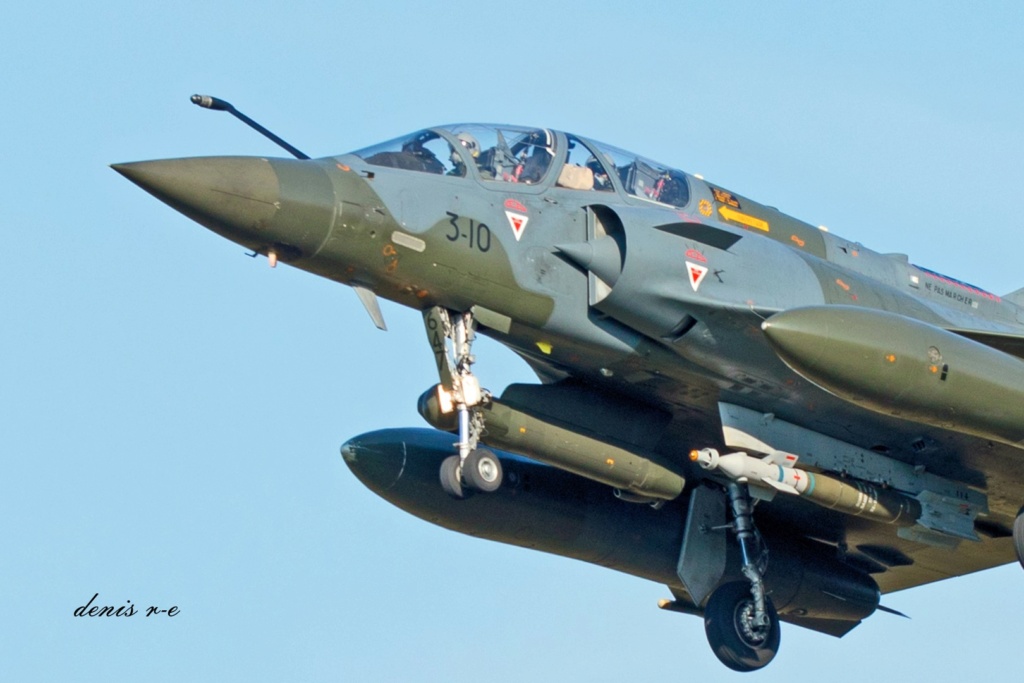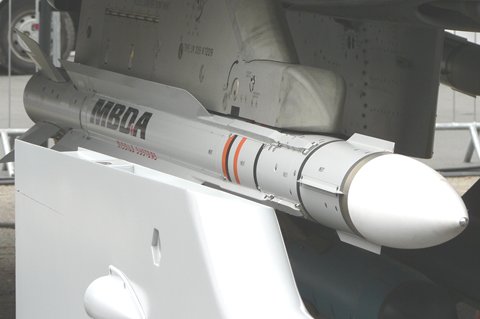GBU
Publié : mar. oct. 20, 2020 9:40 am
Quelqu'un pourrait il me dire quel type de GBU et comment voir si elle est bonne de guerre (ou pas) ?
Photo prise hier à Ochey

Photo prise hier à Ochey

La simulation de vol de combat
https://teamspeak.checksix-fr.com/
https://teamspeak.checksix-fr.com/viewtopic.php?f=279&t=210236

Encore un qui est sorti en queue de promo ...Notez le panneau que tient le NOSA avec écrit dessus "Au cul la DA !"
Je crois que là tu mélanges un peu les choses sans le savoir, en prenant le problème à l'envers.
USAFCurrent NATO aviation ordnance markings regulations:
All munitions used by NATO members have markings applied to them to allow quick identification. This allows correct handling of the ordnance and also allows prompt decisions to be made if an accident such as an aircraft fire occurs. By using a standardised set of colours for markings there is no requirement for a common language, allowing armed forces from different countries to work safely together. It also allows identification from a distance..
The dark green (Deep Bronze Green No 224) colour of a bomb's warhead is a non-significant colour meaning it doesn’t indicate anything. It is the lack of a significant colour i.e. Oxford Blue tells you it isn’t an inert weapon.
The yellow ring (Golden Yellow No 356) indicated the presence of high explosive ( i.e. a live warhead).
The blue (Deep Saxe Blue No 113) rings around a weapon and the lack of any other identification colours indicates that this weapon contains no explosives. This indentifies the round as a training round used for training or firing practice in place of the combat equivalent.
The blue (Deep Saxe Blue No 113) colour of the warhead on a bomb indicates it is a practice bomb. The high explosive is replaced with concrete to give the round the correct weight. These aren’t dropped and are used to give the pilot the same experience as flying with live ordnance. However concrete training rounds may be used to limit collateral damage compared to the used of the High Explosive version.
The white colour of the body of a missile is a non-significant colour meaning it doesn’t indicate anything.
The blue (Deep Saxe Blue No 113) ring around a missile indicates this is a training missile and does not contain a live rocket motor.
The brown ring (Middle Brown No 411) around a missile body indicates the presence of low explosive i.e. a live rocket motor.
The pink ring (Shell Pink No 453) around a missile's warhead indicates the presence of live seeker head used in acquisition training.
The orange (International Orange No 592) and black markings in the centre of the body and at the tail end of a missile indicate an evaluation version of the guided missile. These colours are used when photographic records are required and allow easy identification of if the missile is rotating around its axis.
US bombs colors and stripes post 1957 till present day:
Olive Drab FS34087 bomb body, etc, varies often in shade from one batch to another
Some parts of modern bombs use both Olive Drab (FS34088) and Dark Grey Green FS34095 for different parts
Light Ghost Grey FS36375 has also been introduced in the 1990s for bombs and some guidance pods
Silver/Aluminum FS17178 Countermeasures
Medium Ship Gray FS36118 is often used on modern guidance pods
Yellow FS33538 High Explosive nose stripes on bombs, missile warheads, etc
Red-Brown FS30117 Low Explosive, denotes rocket motors on rockets and missiles
Dark Gull Gray FS36231 Chemical weapons bodies, a different gray than the "modern bomb color gray"
Red FS31136 Irritant agent, such as tear gas, etc
Dark Green FS24108 Toxic Agent,nerve gas, etc the bomb body is the Dk Gull Gray, the stripes are Green for Toxic, or Red for Irritants, with different numbers of stripes for each specific chemical in each group
Black FS37038 Armor piercing, uncommon since the sixties
Light Green FS34449 Smoke or Marker (some stores would get the Light Red, instead, if incendiary)
Light Red FS31158 Incendiary or Highly Flammable,,Napalm
White FS37875,Illuminating
Light Blue FS35109 Training
Orange FS32246 Training/Tracking, this is the "other" Orange named International Orange, it is much "oranger" than the Redish tinted International Orange FS12197 - both were in use during the same years
Bombs stripes evolution:
Since the 1950s, US bombs sported one Yellow FS33538 stripe at the nose area, the location could and did vary, it wasn't always right on the nose behind the fuze
Carrier fires incidents during the Vietnam conflict, brought the introduction in 1971 of the Ablative coating, increasing the length time of bombs resistance to fire.
These Ablative Coating bombs got Two of the Yellow stripes, spaced the same distance apart as one stripe width.
Another stripe was added in more modern times to denote a bomb filled with a certain explosive filler - for example, the Thermally Protected BLU-111A/B, which is a bomb (1st stripe) with Thermal Protection (2nd stripe), filled with PBXN-109 Explosive Filler (3rd stripe), with a FS36375 Light Ghost Gray body
+1OPIT a écrit : ↑mar. oct. 20, 2020 11:44 amJe crois que là tu mélanges un peu les choses sans le savoir, en prenant le problème à l'envers.
Le cerclage/marquage bleu désigne une munition d'exercice, pas forcément inerte d'ailleurs (exemple : roquettes, grenades "à plâtre"). Leur rôle est de permettre de s'exercer à l'emploi de leur variante "BDG", ce qui passe la plupart du temps par un tir effectif sur un champ de tir, ou par la mise en oeuvre de systèmes embarqués (missiles par exemple).
Donc une "concrete bomb" entre parfaitement dans ce cadre, la différence étant qu'elle est utilisée dans un conflit et non sur un champ de tir.
Le totalement inerte, c'est peint en orange. Ce sont des munitions maquettes d'instruction/de manipulation, de simples gueuses qui ont la même forme et la même masse. Si certaines peuvent être montées sous un avion (et voler avec), le tir n'est pas prévu.
